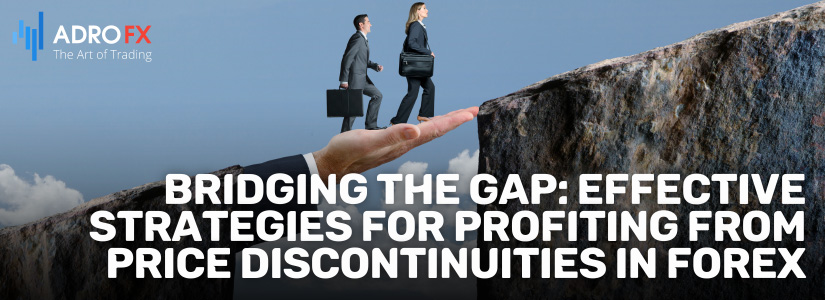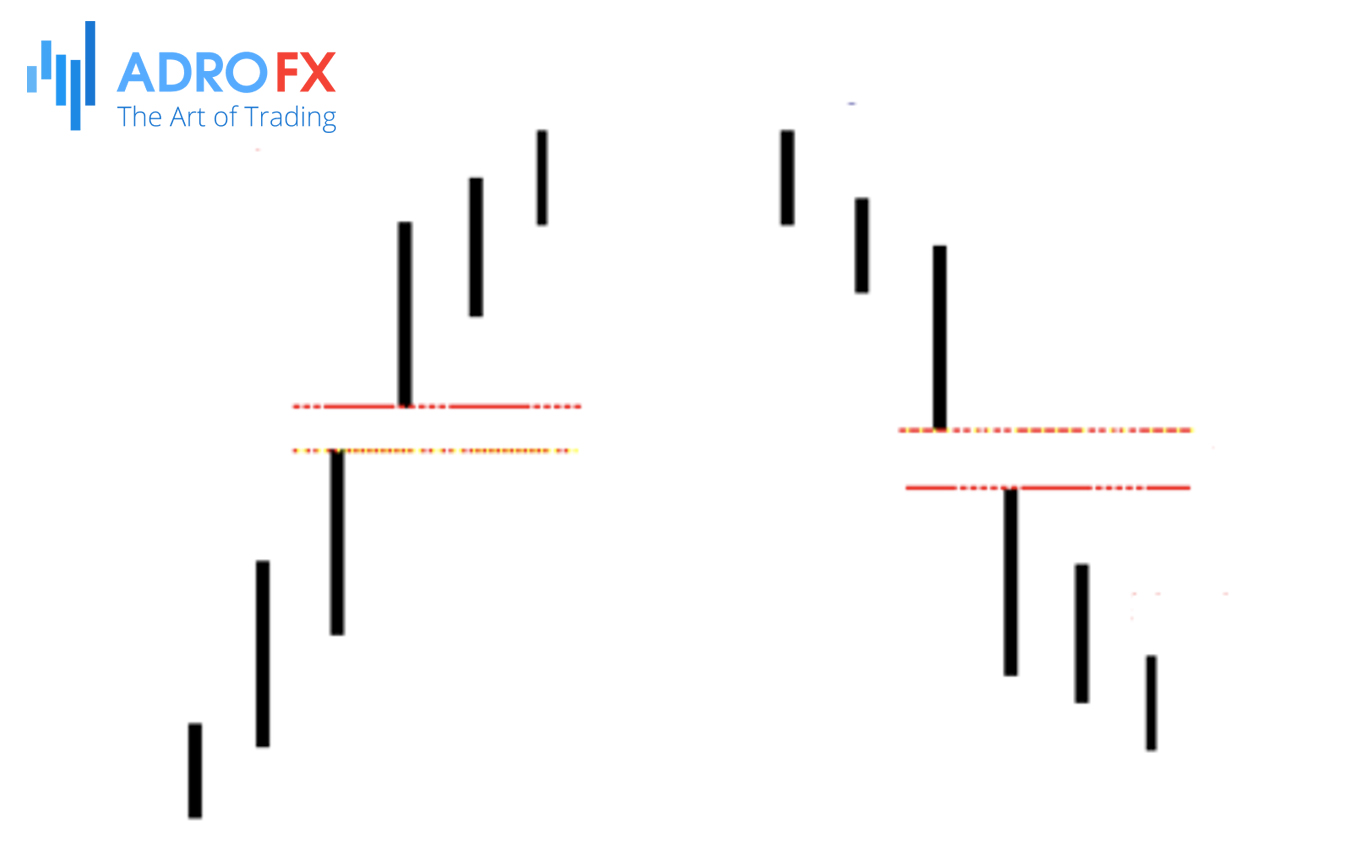Bridging the Gap: Effective Strategies for Profiting from Price Discontinuities in Forex

In the dynamic realm of forex trading, grasping market intricacies is pivotal for success. One such phenomenon that intrigues traders is the presence of gaps in price charts. These gaps, representing discontinuities between the closing and opening prices of consecutive trading sessions, harbor valuable insights into market sentiment and prospective trading avenues. In this comprehensive guide, we embark on an exploration of gap trading within the forex market, unraveling the nuances of gap types, their significance, and the deployment of effective strategies to navigate these price anomalies.
Understanding Gaps in Forex Trading
In forex trading, a gap manifests when there's a noticeable rupture or discontinuity between the closing price of one trading session and the opening price of the next. These gaps manifest visually on price charts as vacant spaces or leaps in price movement, exhibiting various directions: upward, downward, or sideways, contingent upon market conditions and occurrences.
Heightened market volatility often triggers gaps, particularly around significant economic releases, geopolitical events, or unforeseen news disclosures. For instance, the unveiling of a substantial economic indicator, like non-farm payroll data, while the forex market is inactive can prompt a gap upon the resumption of trading. Similarly, geopolitical tensions, central bank pronouncements, or natural calamities can incite gaps in currency prices.
Distinct types of gaps manifest in forex trading scenarios:
Common Gap
This type arises from routine market fluctuations and typically resolves swiftly as trading recommences. Common gaps are often deemed less noteworthy and may not necessarily signify a substantial shift in market sentiment.

Breakaway Gap
These gaps often mark the inception of a new trend. They emerge when prices breach crucial support or resistance levels, signifying a robust shift in market sentiment. Breakaway gaps are commonly accompanied by heightened trading volume and may require more time to fill, indicative of a notable alteration in market dynamics.

Exhaustion Gap
Positioned near the conclusion of a trend, exhaustion gaps hint at the potential depletion of buying or selling pressure. They frequently emerge subsequent to prolonged price movements and are typified by subdued trading volume. Exhaustion gaps may suggest that the prevailing trend is losing steam and could be approaching its culmination.

Runaway (Continuation) Gap
These gaps arise within an existing trend, signaling a temporary hiatus or consolidation before the trend resumes. Typically occurring midway through a trend, these gaps reflect a brief interlude of profit-taking or market indecision before the dominant trend reasserts itself.

Given their potential to offer valuable insights into market sentiment and future price movements, traders keenly monitor gaps. Gap trading strategies involve identifying and leveraging these price disparities to capitalize on short-term price fluctuations. However, gaps also entail risks, as they may trigger significant price swings and heightened volatility upon trading resumption. Hence, traders are urged to exercise prudence and implement apt risk management techniques when navigating gap formations.
What is a Filled Gap?
the concept of a "filled" gap holds significant importance, serving as a crucial indicator of market behavior and potential trading prospects.
A gap materializes when a noticeable disparity emerges between the closing price of one candlestick or bar and the opening price of the subsequent one, creating a conspicuous void on the price chart. These gaps often arise during periods of heightened volatility, spurred by news releases, economic announcements, or market re-openings following weekends or holidays.

When we refer to a gap being "filled," it implies a substantial price movement that eradicates the gap on the price chart, essentially bridging the price differential between the adjacent candlesticks or bars. This occurrence signifies a reversal or correction in the price action that transpired during the gap.
Traders closely monitor gap fills due to their potential to act as significant support or resistance levels in the market. If a price gap is successfully filled, it suggests robust buying or selling pressure, driving the price back to its pre-gap level. This indicates a possible shift in market sentiment or a return to prior price levels.
For instance, in the case of a bullish gap (an upward price movement), traders may interpret a filled gap as a potential support level, anticipating an increase in buying pressure. Conversely, for a bearish gap (a downward price movement), traders might perceive a filled gap as a resistance level, expecting heightened selling pressure.
Understanding gap fills empowers traders to identify pivotal support and resistance levels, strategize entry and exit points for trades, and gauge the strength of market trends. Incorporating gap analysis into trading strategies is essential for effectively navigating market fluctuations and seizing trading opportunities.
Effective Gap Trading Strategies in Forex Markets
Gap trading strategies represent a dynamic approach to capitalize on price discrepancies that emerge on forex price charts, particularly during periods of heightened market volatility. Here, we outline several effective strategies tailored for trading gaps in forex markets:
Fade the Gap
This strategy revolves around the anticipation of a price reversal to fill the gap shortly after its occurrence. Traders employing this tactic typically enter trades counter to the initial gap movement, expecting a retracement back to pre-gap levels. Crucially, Stop Loss orders are implemented to mitigate risks should the gap continue to widen.
Breakout Trading
In contrast to fading the gap, breakout traders seize upon the momentum of the gap movement. They await confirmation that the price will sustain its direction, entering trades in alignment with the gap movement. Breakout traders often leverage technical indicators or chart patterns to confirm the direction of the breakout before committing to a trade.
Partial Gap Fill Strategy
With this approach, traders forecast that the price will only partially bridge the gap before reversing course. They enter trades with the expectation of a partial retracement into the gap before a reversal, enabling them to capture profits from the partial fill. Stop Loss orders are deployed to contain potential losses if the price moves against the trade.
Wait-and-See Approach
Some traders opt to observe market reactions to the gap before making trading decisions. They meticulously monitor price action and market sentiment to ascertain whether the gap is likely to be filled or if the prevailing trend will persist. Armed with clarity, they enter trades with heightened confidence.
Gap Trading with Support and Resistance
Integrating gap trading with support and resistance levels on price charts, traders identify price gaps near significant support or resistance levels. These levels serve as pivotal barriers to price movement, guiding trading decisions based on whether the price breaches these levels or rebounds from them.
News Trading
Given that gaps frequently manifest in response to major news events or economic data releases, traders adept at news trading capitalize on these gaps. They enter positions based on their interpretation of the event's impact on the market, necessitating vigilance regarding upcoming news events and swift reactions to market responses.
Gap Reversal Strategy
This strategy involves trading the reversal subsequent to a gap fill. Traders await the gap to be filled, thereafter entering trades opposite to the initial gap movement, anticipating a reversal in the price trend. Essential to this strategy are Stop Loss orders to manage risks in case the reversal fails to materialize.
These gap trading strategies are adaptable across diverse market conditions. However, thorough analysis and robust risk management are imperative to optimize success. Furthermore, practicing these strategies in a demo account facilitates gaining experience and confidence before executing them in live trading environments.

Top Tips for Trading Gaps in the Forex Market
- Assess Market Conditions
Before engaging in gap trading, conduct a thorough assessment of prevailing market conditions. Gaps tend to occur more frequently during periods of heightened volatility, often surrounding major news events or economic releases. By comprehensively understanding market dynamics, you can anticipate potential gap movements and tailor your trading strategies accordingly.
- Differentiate Types of Gaps
Familiarize yourself with the various types of gaps present in the forex market, including breakaway, runaway, and exhaustion gaps. Each type exhibits unique characteristics and implications for price movement. This understanding enables you to select the most suitable trading approach aligned with the specific gap type you encounter.
- Implement Stop Loss Orders
Employing Stop Loss orders is paramount in gap trading to effectively manage risk. Given the potential for rapid price movements associated with gaps, inadequate risk management can lead to substantial losses. Set Stop Loss orders at strategic levels based on support and resistance or volatility measurements to safeguard your trading capital.
- Exercise Patience and Seek Confirmation
Exercise patience and await confirmation before executing gap trades. Confirmatory signals, such as price action confirmation or signals from technical indicators, validate the direction of gap movement and enhance the reliability of your trade decisions. Rushing into trades without confirmation may expose you to unnecessary risks.
- Analyze Trading Volume
Analyze trading volume accompanying gaps to gauge the strength of price movements. High volume during a gap signifies heightened market participation, affirming the validity of the price movement. Conversely, low volume may signal a lack of conviction and potential for reversal, prompting cautious assessment before initiating trades.
- Incorporate Technical Analysis
Integrate technical analysis tools and indicators into your gap trading strategy. Utilize tools such as support and resistance levels, trendlines, moving averages, and oscillators to gain valuable insights into market trends. These technical indicators aid in identifying potential entry and exit points, enhancing the effectiveness of your trading decisions.
- Remain Flexible and Adaptive
Maintain flexibility and adaptability in your approach to gap trading. Market conditions can evolve rapidly, and gaps may exhibit behavior different from initial expectations. Be prepared to adjust your trading plan in response to new information and evolving market dynamics, ensuring resilience in navigating changing environments.
- Prioritize Risk Management
Emphasize risk management as a cornerstone of your trading strategy to safeguard your capital. Limit the risk exposure on each trade by risking only a small percentage of your trading account and avoiding over-leveraging. Diversify your trades and refrain from concentrating all capital in a single gap trade to mitigate potential losses.
- Stay Informed and React Swiftly
Stay abreast of upcoming news events, economic releases, and other factors influencing market volatility and gap movements. Being cognizant of potential catalysts allows you to anticipate gap opportunities and react promptly to market developments, enhancing your ability to capitalize on trading opportunities.
- Exercise Patience and Discipline
Cultivate patience and discipline in your trading approach, refraining from chasing trades or succumbing to emotional impulses. Adhere to your trading plan steadfastly and maintain discipline, even in the face of unexpected outcomes. Consistent and disciplined trading practices contribute to better results over time in navigating gap trading within the forex market.
Conclusion
Closing the gap between market knowledge and trading execution is essential in the dynamic world of forex trading. Gaps, as we've discovered, unveil valuable insights into market sentiment and unlock potential trading opportunities for savvy traders. Whether you're capitalizing on breakouts, fading the gap, or adopting a wait-and-see approach, effective risk management and discipline are paramount. By integrating these strategies with a deep understanding of market dynamics, traders can bridge the gap between aspiration and achievement in the forex market. By staying informed, remaining adaptable, and adhering to disciplined trading practices, traders can navigate the twists and turns of gap trading, steering their financial endeavors toward success in the ever-evolving landscape of forex trading.
About AdroFx
Established in 2018, AdroFx is known for its high technology and its ability to deliver high-quality brokerage services in more than 200 countries around the world. AdroFx makes every effort to keep its customers satisfied and to meet all the trading needs of any trader. With the five types of trading accounts, we have all it takes to fit any traders` needs and styles. The company provides access to 115+ trading instruments, including currencies, metals, stocks, and cryptocurrencies, which make it possible to make the most out of trading on the financial markets. Considering all the above, AdroFx is the perfect variant for anyone who doesn't settle for less than the best.










